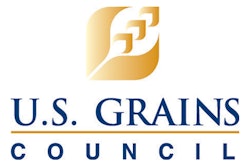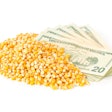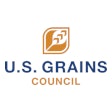
Rising incomes worldwide will underpin global demand and create opportunities for U.S. exports in grains, oilseeds and ethanol according to a new report from CoBank’s Knowledge Exchange Division. Meanwhile, global commodity surpluses, trade agreement renegotiations, and relative strength of key currencies will set the scope of growth over the next three years.
“In the absence of major weather disruptions, global grain surpluses are expected to persist over the next three years. Acreage expansions and improvements to yields in competing export hubs will be headwinds for U.S. exports,” said Tanner Ehmke, manager of CoBank’s Knowledge Exchange Division. “The bright spot will be the continual growth in demand. As the global middle class grows, so will the opportunities for U.S. exports.”
Overall, U.S. grains, oilseeds and ethanol will face mounting competition in export markets, but there are specific considerations for each commodity.
Corn
In the short term, demand for corn will continue on a solid growth path. However, the trajectory is expected to slow over the medium term as livestock and broiler growth slows. The ethanol sector will also struggle to grow demand substantively due to changing market dynamics in Brazil, and remaining challenges related to higher blend levels in the U.S. In the export market, corn will face significant competition from South America and Eastern Europe, specifically Brazil, Argentina and Ukraine.
“The combination of anemic demand growth domestically and rising export competition abroad is expected to result in only minor improvements in the years ahead,” said Ehmke. “Free trade agreements are needed to increase our competitiveness abroad.”
Wheat
The long-term trends of low prices, declining acreage and rising export competition point to more challenges for U.S. wheat.
“Russia’s dominance in the world wheat market creates an uphill battle for U.S. wheat farmers, many of whom are reducing or eliminating wheat in their rotations in search of more profitable crops,” said Ehmke.
Soybeans
The U.S. is still the world’s largest producer of soybeans, but has handed the mantle of largest exporter to Brazil. This trend is expected to continue as the value of the real remains low compared to the U.S. dollar, and nagging infrastructure challenges in Brazil are improving.
“Global demand growth for livestock feed and biodiesel production will support U.S. soybeans,” said Ehmke. “But Brazil is looking to further its lead in exports and will continue to expand soybean plantings.”
Ethanol
Brazil and China are determined to reduce their dependence on U.S. ethanol. Expansion of U.S. demand also faces challenges as higher blend levels will be slow to gain acceptance.
“The U.S. could lose Brazil as an export market, and will also be competing globally with Brazil moving forward,” said Ehmke. “The U.S. will shift focus to emerging markets like Mexico, Thailand, India and Indonesia in the medium term. However, the newly developed markets are unlikely to fully offset losses in China and Brazil, resulting in weaker crush margins.”
Farm Supply
Commodity price stagnation and overcapacity in fertilizer production point to a weak fertilizer market over the short to medium term. Crop protection and seed sales are also expected to struggle due to low commodity prices and rising farm debt levels. Seed and chemical prices, though, are expected to rise, stemming from mergers and acquisitions throughout the world and increased environmental regulatory burdens on chemical companies in China.
A brief video synopsis of the report, “2018-2020: Pressure on Grain and Farm Supply Sectors to Persist” is available on the CoBank YouTube channel. The full report is available to media on request.

















